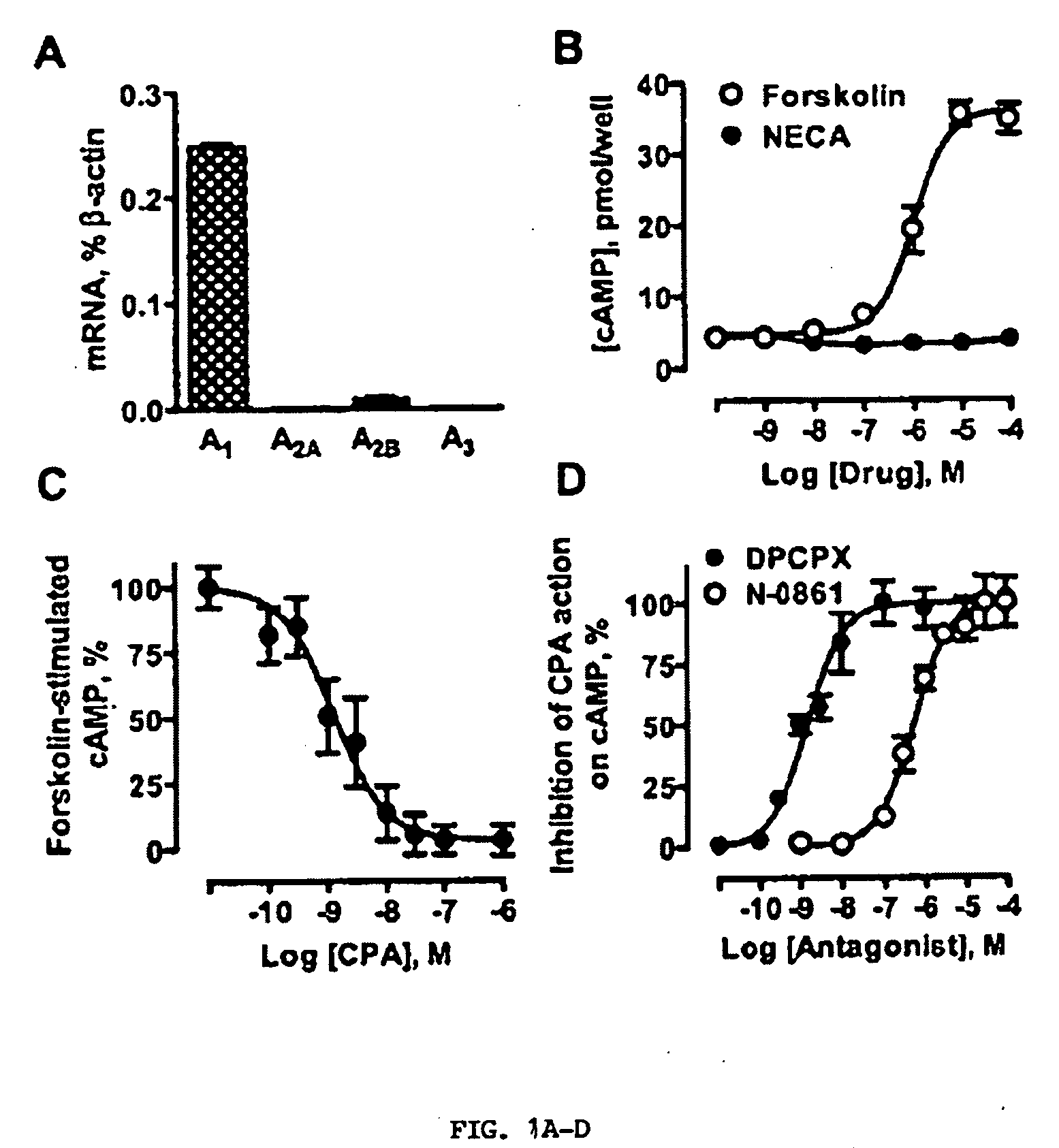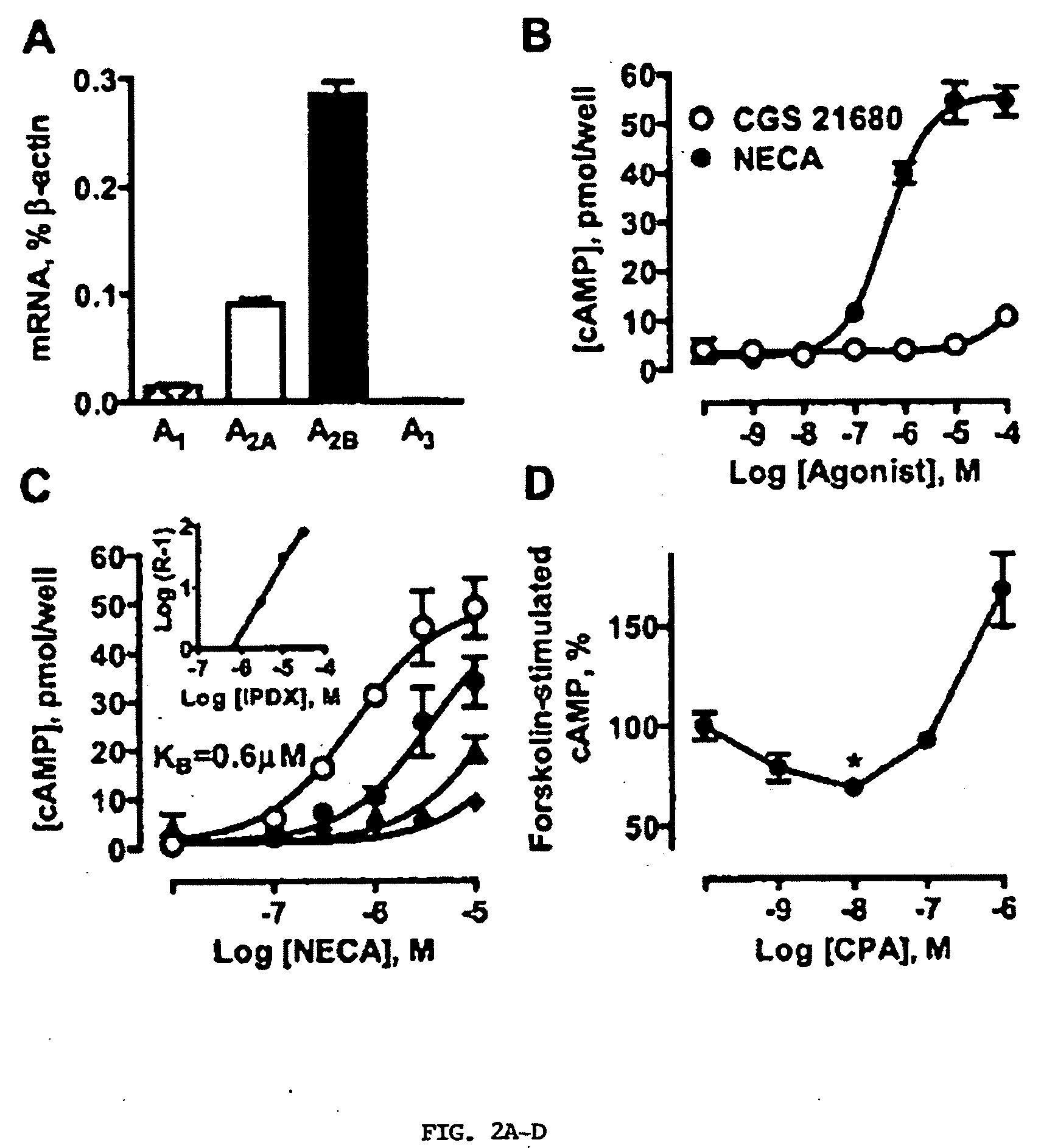Use of adenosine receptor ligands to promote cell adhesion in cell-based therapies
a technology of adenosine receptor and cell-based therapy, which is applied in the field of pathology and cardiology, can solve the problems of limiting the effectiveness of therapy, affecting the survival rate of patients, and irreversible damage to cardiac function
- Summary
- Abstract
- Description
- Claims
- Application Information
AI Technical Summary
Benefits of technology
Problems solved by technology
Method used
Image
Examples
example 1
Materials and Methods
[0203]Reagents. N6-cyclopentyladenosine (CPA), 5′-N-ethylcarboxamidoadenosine (NECA), 4-((N-ethyl-5′-carbamoyladenos-2-yl)-aminoethyl)-phenyl-propionic acid (CGS21680), 8-cyclopentyl-1,3-dipropylxanthine (DPCPX), and adenosine were purchased from Sigma (St. Louis, Mo.). Endonorbornan-2-yl-9-methyladenine (N-0861) was a gift from Whitby Research, Inc. (Richmond, Va.) and 5-amino-7-(phenylethyl)-2-(2-furyl)-pyrazolo-[4,3-e]-1,2,4-triazolo-[1,5-c]-pyrimidine (SCH58261) was a gift from Drs C. Zocchi and E. Ongini (Schering Plough Research Institute, Milan, Italy). 3-isobutyl-8-pyrrolidinoxanthine (IPDX) was synthesized as previously described (Feoktisov et al., 2001). Dimethyl sulfoxide (DMSO) was purchased from Sigma. When used as a solvent, final DMSO concentrations in all assays did not exceed 1% and the same DMSO concentrations were used in vehicle controls.
[0204]Cell isolation and culture. MCEC-1, conditionally immortalized mouse cardiac microvascular endotheli...
example 2
Results
[0214]Adenosine Receptors in Mouse Embryonic EPCs. Real-time RT-PCR showed that eEPCs preferentially express mRNA encoding A1 receptors (0.248±0.004% of p-actin; FIG. 1A). Very low levels of A2B receptor mRNA were also detected (0.009±0.002% of β-actin), whereas transcripts for A2A and A3 receptors were below detection levels.
[0215]The inventors measured cAMP accumulation as a way to determine whether expression of mRNA translates into functional presence of adenosine receptors in eEPCs; A2A and A2B receptors stimulate adenylate cyclase via coupling to Gs proteins, whereas A1 and A3 receptors inhibit this enzyme via coupling to Gi proteins.5 The affinity to adenosine receptor subtypes of the agonists and antagonists used are summarized in the Table 1.
TABLE 1Affinity or potency of agonists and antagonists at human (h), rat (r), guinea pig(gp) and mouse (m) adenosine receptor subtypes (Ki, KD, KB, IC50 or EC50 values innmol / L with 95% confidence intervals or ±SEM in parentheses...
PUM
| Property | Measurement | Unit |
|---|---|---|
| Adhesion strength | aaaaa | aaaaa |
| Cell adhesion | aaaaa | aaaaa |
Abstract
Description
Claims
Application Information
 Login to View More
Login to View More - R&D
- Intellectual Property
- Life Sciences
- Materials
- Tech Scout
- Unparalleled Data Quality
- Higher Quality Content
- 60% Fewer Hallucinations
Browse by: Latest US Patents, China's latest patents, Technical Efficacy Thesaurus, Application Domain, Technology Topic, Popular Technical Reports.
© 2025 PatSnap. All rights reserved.Legal|Privacy policy|Modern Slavery Act Transparency Statement|Sitemap|About US| Contact US: help@patsnap.com



